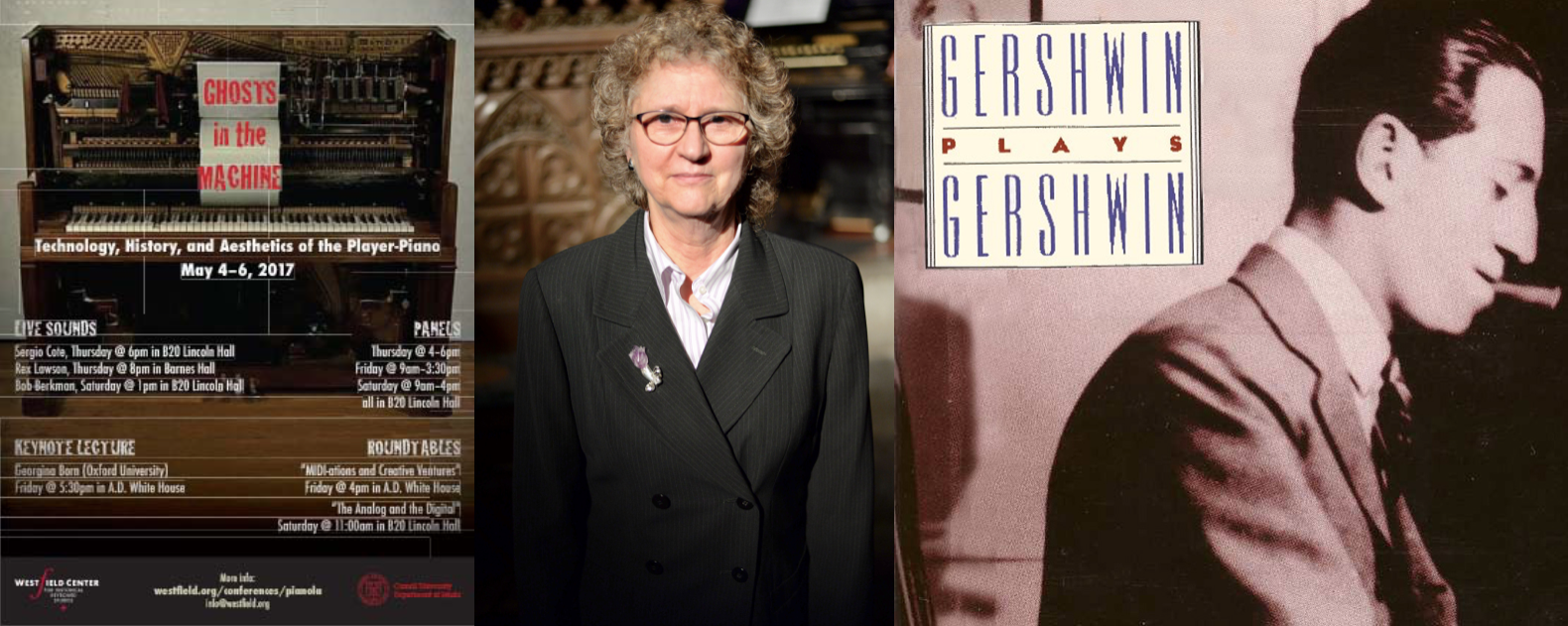On May 4th, I presented a research paper entitled “Voicing Artis, Pianolizing Gershwin: Piano Rolls in the Post-Digital and Post-Industrial Era” in the panel entitled “Player-Pianos and Piano Rolls: Arrangements, Engagements, and Re-engagements” at the Ghosts in the Machine: Technology, History, and Aesthetics of the Player-Piano Conference. The conference was sponsored by the Westfield Center for Historical Keyboard Studies and took place at Cornell University.
The following is the abstract for the paper:
Voicing Artis, Pianolizing Gershwin: Piano Rolls in the Post-Digital and Post-Industrial Era
Artis Wodehouse’s “Gershwin Plays Gershwin” recording sold over 500,000 copies with Nonesuch in 1993. Wodehouse utilized scans of original piano rolls for the purposes of developing MIDI data that would control a Yamaha Disklavier. However, in addition to this analog to digital representation, Wodehouse pianolized a performance of the original rolls in ways that creatively contributed historically informed register voicing that was not encoded in the original rolls. The addition of Wodehouse’s expressivity complicated the allure of piano rolls as simple re-embodiments of composers performing their own work. This paper explores the work of Wodehouse in realizing Gershwin’s piano rolls, both in the Gershwin Plays Gershwin recording project and her current independent activities with archiving and presenting performances of the composer’s unreleased rolls. It considers specific aspects of Wodehouse’s experiences in relation to recent scholarship on musical production, the music industry, and the study of creative labor. Themes that emerge from such an analysis include industrial verses DIY modes of musical presentation, digital verses analog production, industrial work and creative labor, gender and improvisativity, and the work concept in “post?”-human musical contexts. This analysis is an example of situating the production, circulation, and consumption of music in the diminishing channels of popular music recording commodification, the return to analog from digital, the legacy of second wave feminism in the wake of the once powerful record industry, and finally rendering opaque the once transparent yet artistic work of a pianist who voiced the performance of Gershwin’s piano rolls.
